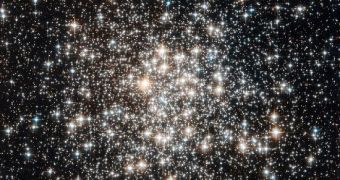A galaxy that produces the equivalent of 3,000 Suns on a yearly basis has recently been discovered by astronomers.
Shortly after having been pinned down, the galaxy has been dubbed the Universe's most prolific star factory.
The galaxy's official name is HFLS3. When comparing it to our Milky Way, the researchers came to realize that it is roughly 2,000 times more prolific than the latter in terms of rolling out Suns.
Information shared with the public says that the HFLS3 galaxy is located at a distance of about 12.8 billion light-years from our planet.
Because of its being this far away from Earth, the galaxy can only be observed by astronomers as it was when the Universe was merely 6% of its current age, the National Radio Astronomy Observatory says.
Just for the record, the Universe is believed to currently be about 13.7 billion years old.
Following their looking at the make-up of this galaxy, the researchers who discovered it concluded that the mass of the stars that form it is about 40 billion times bigger than the mass of the Sun.
Furthermore, they say that the gas and dust that are also part and parcel of it amount to a mass roughly 100 billion times greater than that of the Sun.
The stars, the dust and the gas are all surrounded by dark matter.
“This galaxy is proof that very intense bursts of star formation existed only 880 million years after the Big Bang,” commented with respect to these findings Dominik Riechers, a researcher currently working with Cornell University.
“We've gotten a valuable look at a very important epoch in the development of the first galaxies,” Dominik Riechers went on to argue.
The galaxy's distance from our planet and its characteristics have been determined with the help of 12 international telescope facilities, the same source informs us.
“This is the most detailed look into the physical properties of such a distant galaxy ever made. Getting detailed information on galaxies like this is vitally important to understanding how galaxies, as well as groups and clusters of galaxies, formed in the early Universe,” Dominik Riechers pointed out.

 14 DAY TRIAL //
14 DAY TRIAL //